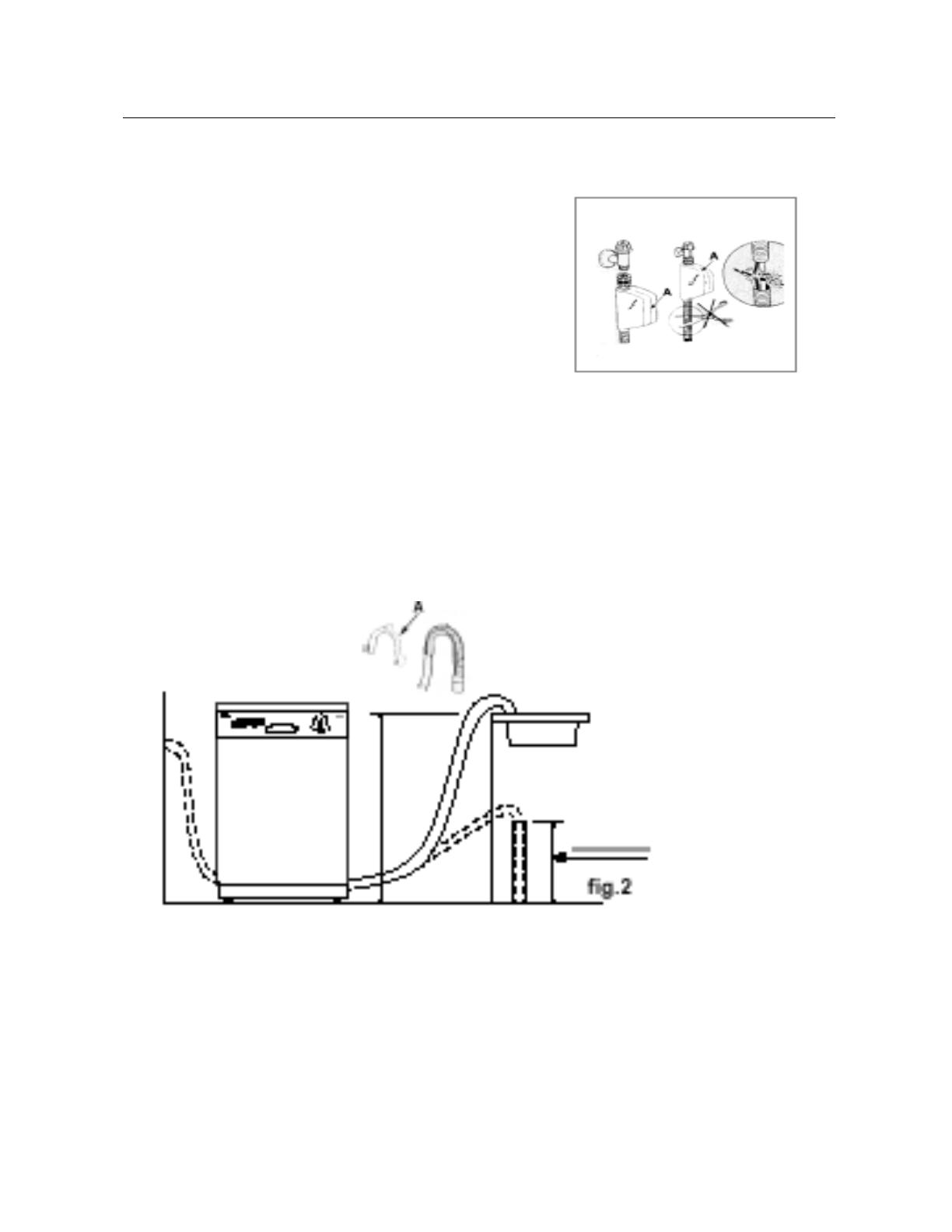
- 13 -
Installation and Accessory Parts
7.3 Cold Water Connection
Connect the cold water supply hose to a threaded 3/4(gas) connector, inserting the small
filter supplied with the dishwasher and making sure that
it is fastened tightly in place (see Fig.1) If the water
pipes are new or have not been used for an extended
period of time, let the water run to make sure that the
water is clear and free of impurities. If this precaution is
not taken, there is a risk that the water inlet can get
blocked and damage the appliance.
7.4 Hot Water Connection
The water supply to the appliance can also be connected to the
house's hot water line (centralised system, heating system), as long as it does not exceed a
temperature of 60℃ . In this case, the wash cycle time will be shortened by about 15
minutes and the wash efficiency slightly reduced.
7.5 Drain Hose Connection
Insert the drain hose into a drain pipe with a minimum diameter of 4cm,or let it run into the
sink, making sure to avoid bending or crimping it. Use the special plastic support that comes
with the appliance (see Fig.2). The free end of the hose must be at a height between 40 and
100 cm and must not be immersed in water.
7.6Electrical Connection
After making sure that the voltage and frequency values for the current in the home
correspond to those on the rating plate (located on the stainless steel inner door of the
appliance) and that the electrical system is correct for the maximum voltage on the rating
plate, insert the plug into an electrical socket which is earthed properly (the earthing of the
appliance is a safety requirement mandated by law). If the electrical socket to which the
appliance must be connected is not appropriate for the plug, replace the plug ,rather than
using adpators or the like as they could cause overheating and burns.




















